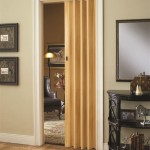What Are Hollow Interior Doors Made Of?
Hollow interior doors are a cost-effective and lightweight option for interior applications. They are typically not as robust as solid core doors, but they are sufficient for most residential and commercial applications. Hollow interior doors are available in various styles and finishes to match any décor.
The core of a hollow interior door is typically made of lightweight materials such as cardboard, honeycomb paper, or polystyrene foam. These materials are encased in a thin layer of wood veneer or laminate. The veneer or laminate provides the door with its strength and durability. Hollow interior doors are typically less expensive than solid core doors because they require less material to manufacture. They are also lighter, which makes them easier to install.
Hollow interior doors are available in a wide range of styles and finishes. They can be painted, stained, or finished with a veneer or laminate to match the décor of any room. Hollow interior doors can also be purchased with various hardware options, such as knobs, handles, and locks.
Hollow interior doors are a good choice for interior applications where cost and weight are important considerations. They are not as durable as solid core doors but are sufficient for most residential and commercial applications.
Types of Hollow Interior Door Cores
There are three main types of hollow interior door cores: cardboard, honeycomb paper, and polystyrene foam.
Cardboard cores are the most common type of hollow interior door core. They are made of recycled cardboard that has been compressed and glued together. Cardboard cores are lightweight and inexpensive, but they are not as durable as other types of cores.
Honeycomb paper cores are made of thin sheets of paper that have been glued together in a honeycomb pattern. Honeycomb paper cores are stronger and more durable than cardboard cores, but they are also more expensive.
Polystyrene foam cores are made of expanded polystyrene foam. Polystyrene foam cores are lightweight and durable, but they are not as strong as honeycomb paper cores.
Benefits of Hollow Interior Doors
There are several benefits to using hollow interior doors, including:
- Cost-effective: Hollow interior doors are less expensive than solid core doors because they require less material to manufacture.
- Lightweight: Hollow interior doors are lighter than solid core doors, which makes them easier to install.
- Available in a wide range of styles and finishes: Hollow interior doors are available in various styles and finishes to match any décor. They can be painted, stained, or finished with a veneer or laminate.
- Good choice for interior applications where cost and weight are important considerations: Hollow interior doors are a good choice for interior applications where cost and weight are important considerations. They are not as durable as solid core doors but are sufficient for most residential and commercial applications.

Solid Core Doors Vs Hollow Park Avenue Locks

Solid Core Vs Hollow Doors What S The Difference
Hollow Core Or Solid Doors Which Are Best Jeld Wen

What Are Hollow Metal Doors Made Of Learn More

Smooth Hollow Core Paper Honeycomb Hdf Interior Barn Doors Made In China Com

Reuse Hollow Core Doors To Make Plywood And More

What Is Flush Doors Its Types Plywood Guru
Hollow Core Or Solid Doors Which Are Best Jeld Wen

Interior Door Materials Trimlite

Interior Doors What S Really Inside








